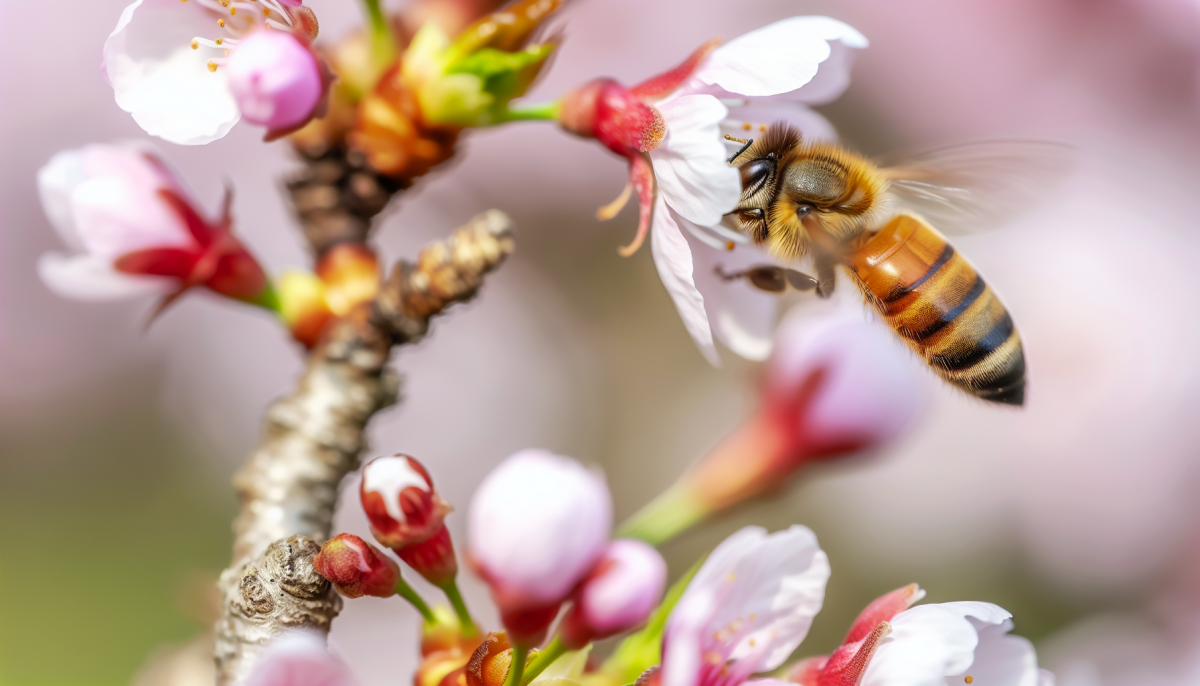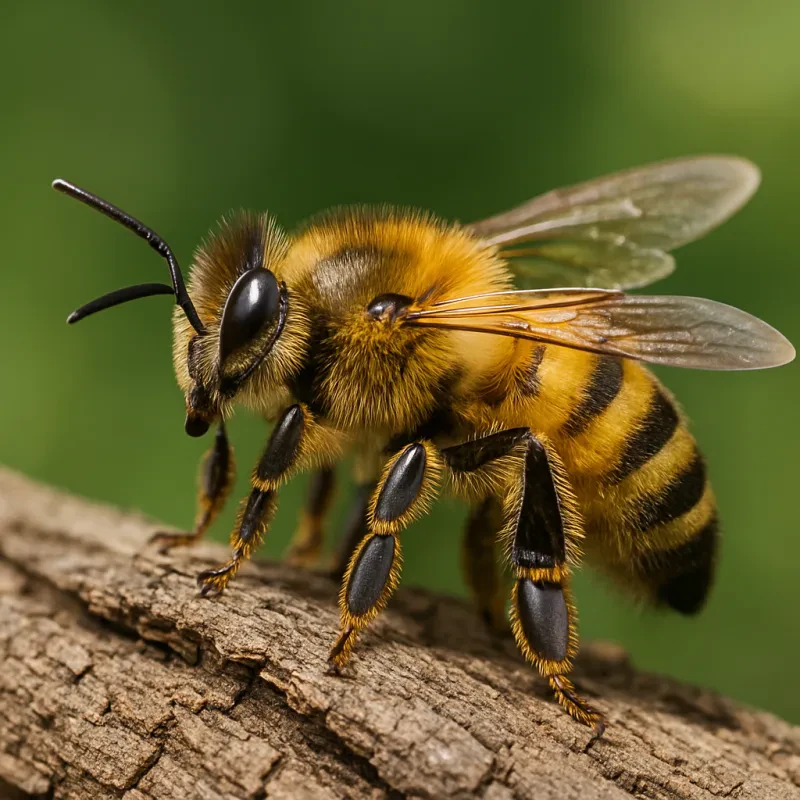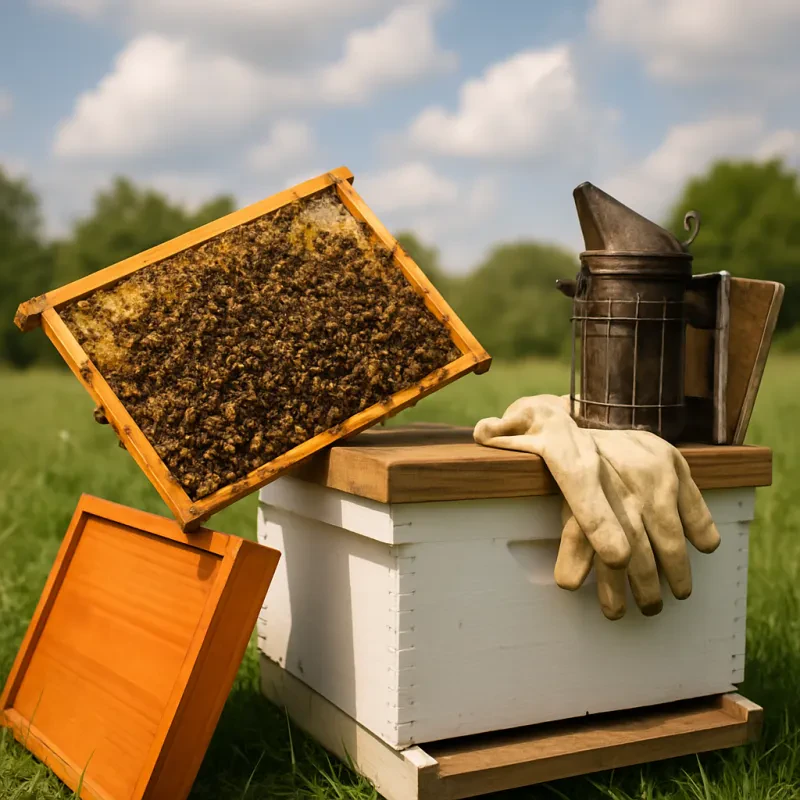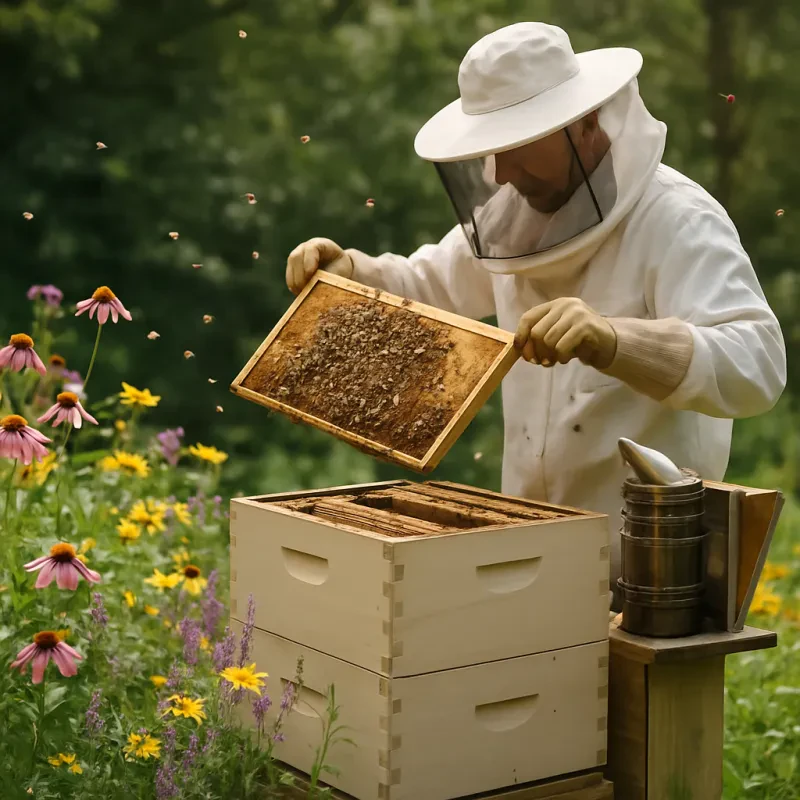Introduction
The Japanese honey bee (Apis cerana japonica) is a subspecies of the Asian honey bee, native to Japan. Unlike its Western counterpart, Apis mellifera, which has been widely introduced for commercial beekeeping, the Japanese honey bee has developed unique adaptations to survive Japan’s distinct climatic and ecological conditions. This article explores the characteristics, behavior, ecological significance, and conservation efforts surrounding this remarkable species.
What is the Japanese Honey Bee?
Taxonomy and Classification
The Japanese honey bee belongs to the genus Apis within the family Apidae. It is a subspecies of Apis cerana, which is commonly found across Asia. While Apis cerana is widespread, Apis cerana japonica has uniquely adapted to Japan’s forests, mountains, and diverse weather conditions.
Physical Characteristics
-
Size: Slightly smaller than Apis mellifera, the Japanese honey bee measures about 10-13 mm in length.
-
Coloration: It has a darker body with brown and black stripes, which helps it blend into its natural surroundings.
-
Wings: More translucent and slightly shorter than those of Western honey bees.
Behavior and Unique Adaptations
Defense Mechanism Against the Giant Hornet
One of the most remarkable adaptations of Apis cerana japonica is its ability to defend itself against the deadly Asian giant hornet (Vespa mandarinia). Unlike Apis mellifera, which is highly vulnerable to hornet attacks, Japanese honey bees have developed a unique defense strategy:
-
Bee Balling: When a hornet scout enters their hive, hundreds of bees surround it, forming a tightly packed "heat ball."
-
Thermal Defense: The bees generate heat by vibrating their wing muscles, raising the temperature inside the ball to around 47°C (116°F), which is lethal to the hornet but not to the bees.
-
Carbon Dioxide Release: The heat balling strategy is further enhanced by the release of CO₂, which contributes to suffocating the hornet.
Foraging and Pollination
Japanese honey bees are efficient foragers, known for their adaptability in collecting nectar and pollen from a wide variety of plants, including:
-
Wildflowers
-
Fruit trees (cherry, plum, and apple)
-
Camellia and other native Japanese flora
Their pollination services are crucial for maintaining biodiversity and supporting agriculture in Japan.
Nesting Behavior
Unlike Apis mellifera, which often requires human-managed hives, Apis cerana japonica naturally nests in:
-
Hollow trees
-
Rock crevices
-
Eaves of old buildings
-
Abandoned logs
This nesting behavior makes them more self-sufficient and resilient against certain diseases and pests that commonly affect commercial honey bees.
The Role of Japanese Honey Bees in the Ecosystem
Importance in Pollination
Japanese honey bees play a vital role in pollinating native plants and crops. Their foraging behavior contributes to:
-
Increased crop yields (especially for fruits and nuts)
-
Sustaining wild plant populations, which support other wildlife
-
Maintaining biodiversity in Japan’s forests and agricultural landscapes
Honey Production
While not as prolific as Apis mellifera in honey production, Japanese honey bees produce a unique, highly prized honey known as Yamato honey or "wild honey." It is darker, richer, and has a distinctive floral taste due to the diverse plant sources the bees forage from.
Challenges and Threats to the Japanese Honey Bee
Habitat Loss
Deforestation, urbanization, and agricultural expansion have led to the loss of natural nesting sites for Apis cerana japonica. As their natural habitat shrinks, the species faces increased competition for resources.
Pesticide Exposure
The widespread use of neonicotinoids and other pesticides in agriculture poses a significant threat to Japanese honey bees, affecting their navigation, foraging ability, and colony health.
Competition with Apis mellifera
Imported Western honey bees (Apis mellifera) are more commonly used for commercial beekeeping in Japan. This has led to increased competition for floral resources, and in some cases, hybridization risks that could impact the genetic purity of Apis cerana japonica.
Climate Change
Changing temperatures and weather patterns affect flowering times and nectar availability, potentially disrupting the foraging cycles of Japanese honey bees.
Conservation and Sustainable Beekeeping Efforts
Protection of Natural Habitats
Conservationists and environmental organizations in Japan are advocating for the protection of forested areas where Apis cerana japonica naturally thrives. Efforts include:
-
Reforestation projects
-
Creation of pollinator-friendly habitats
-
Legal protections for native bee populations
Promoting Traditional Beekeeping Practices
Traditional Japanese beekeeping, known as "Kurohachi-Kanri", involves non-invasive techniques that allow bees to thrive in natural settings. These methods focus on:
-
Minimal hive intervention
-
Avoiding chemical treatments
-
Allowing natural swarming behaviors
Reducing Pesticide Use
Regulations on pesticide use and public awareness campaigns have helped reduce harmful chemical exposure to native pollinators. Sustainable farming practices that prioritize bee-friendly approaches are encouraged.
Research and Breeding Programs
Ongoing scientific research aims to:
-
Study the genetic traits that make Apis cerana japonica more resilient
-
Develop breeding programs to enhance their natural defenses
-
Monitor population health through citizen science initiatives
The Japanese honey bee (Apis cerana japonica) is an essential pollinator that has thrived in Japan’s unique environment for centuries. Their impressive defense mechanisms, ecological role, and adaptation to diverse conditions make them a fascinating subject of study and conservation efforts. However, threats such as habitat loss, pesticides, and climate change pose challenges that require immediate action.
By promoting sustainable beekeeping, protecting natural habitats, and reducing pesticide use, we can ensure the survival of this incredible species for future generations. Supporting native pollinators like the Japanese honey bee is not just crucial for Japan's biodiversity but also for the overall health of the planet's ecosystems.







